Introduction
Across multiple sectors, the need for medical tube set assemblies is expected to increase in the coming years. For example, Global News Wire is reporting an expected 6% CAGR and greater than $156B USD in revenue by 2032 in the US kidney dialysis care market, driven largely by an uptick in diseases such as diabetes that can cause kidney failure. In another example, the global apheresis (plasma separation) market is expected to reach $2.7B USD in revenue with a CAGR of 8.1% by 2025 according to Markets and Markets due to, as above, the increasing prevalence of chronic diseases.
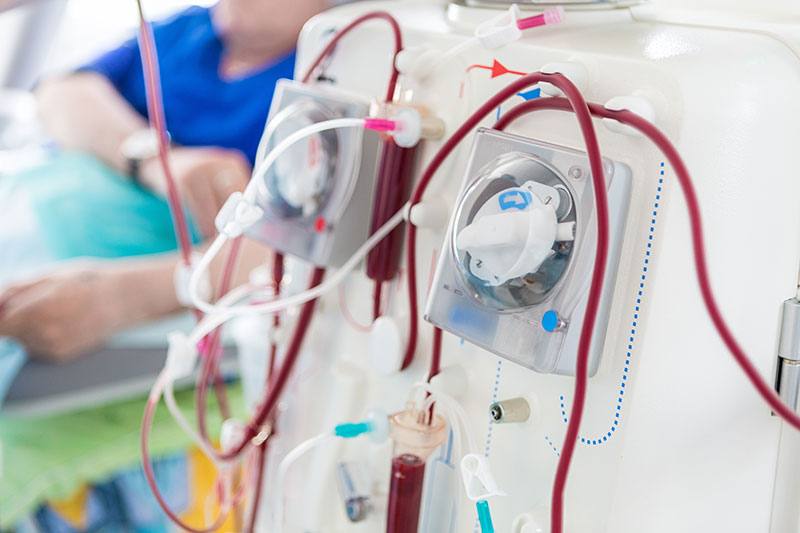
Why are Innovations in Tube Set Manufacturing Important?
Complicating the expected growth in demand in tube set markets, many suppliers are also experiencing a labor shortage due to the high operator counts (typically 150-200+ workers per shift to output at needed rates) and intense dexterity demands required of manual tube set assembly. In Mexico, one of the key countries for manual tube set assembly, 75% of employers in the country are struggling to find workers according to a study done by the Employers’ Confederation of Mexico. With all this in mind, automation will play an integral role in closing the gap between the growing need for tube sets and the diminishing workforce available for manual/operator driven assembly of tube sets.
The Challenge…
In order to lessen dependence on operator counts, tube set automation equipment is required to automate the full-end to-end assembly process including the following operations:
- tube loading (straight pull or wound),
- component press to tube/solvent bonding,
- inspection of the generated bond,
- folding,
- taping, and
- offload (in some cases including packaging).
Tube loading, component insert, and tube folding, in particular, are incredibly process heavy stations that require a significant amount of tooling flexibility to integrate successfully. This is especially true given the product variability (shifting stiffness, shifting diameter, varying ovality, etc.) inherent with a flexible product such as medical tubing. To handle all these conditions, an innovative, flexible approach while tracking all facets of assembly data to support troubleshooting is required.
Delivering Flexibility in Tube Set Assembly
At the base of our approach is the SuperTrak CONVEYANCE TM platform. Utilizing the SuperTrak CONVEYANCE platform, we are able to achieve flexibility, speed and repeatability through the use of its linear motor technology (LMT). At the heart of the SuperTrak are electromagnetic coils (e.g. motor) and encoder strip readers in the base chassis. Combining these two technologies, SuperTrak is able to achieve a maximum speed of 4 m/s (accelerating to this speed at a maximum of 4Gs), and a shuttle-to-shuttle repeatability of +/- 0.01 mm, all while maintaining independent traffic control of each shuttle in the system.
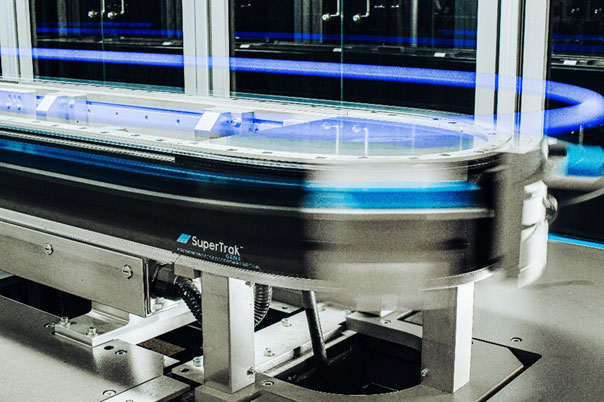
The speed of the SuperTrak is ideal for tube set assembly, where decreasing index time allows us to maximize station uptime and meet our customers’ rigorous piece part volume requirements. Additionally, the incredible shuttle-to-shuttle repeatability of the conveyance ensures that our station tooling is not attempting to hit a ‘moving target’ when operating on tube set assemblies in nest tooling.
Finally, the flexibility of the system allows each and every station to work independently. Thus, if the first station in the machine pauses (e.g. due to a part misfeed from a feeder bowl), the tenth or fifteenth station in the machine will still complete its cycle. This ensures that, particularly for many of the process heavy stations inherent with tube set assembly, we are not stopping critical processes in the middle of their motions, which can lead to extra scrap.
Maintaining Speed with Synchronous Station Tooling
Traditionally, one disadvantage of asynchronous systems is that they trade speed in order to achieve flexibility. With speed and throughput being of utmost importance for tube set manufacturers to achieve ROI, this is not a tradeoff ATS Life Sciences Systems (LSS) was willing to make with our tube set assembly platform. In order to maintain throughput, we’ve married synchronized servos and scheduled pneumatic tooling, allowing us to achieve up to 60 cycles per minute operation on the majority of tube set assembly operations.
Speaking more to the technical details, each station (e.g. the tube loading/coiling station, component insert station, etc.) operates on a ‘virtual cam’ that acts as a conductor, timing each station motion between 0 and 360 degrees (to match a physical cam). Doing so allows us to blend servo motions (e.g. rounding corners), move tooling in ways that would risk crashes if unsynchronized, and anticipate the desired timing of pneumatics, pre-firing them to overcome the latency of pressurized air. This is particularly important on our tube winding station, that includes 4x servos and 6x pneumatics acting in harmony.
To integrate this tooling with the asynchronous SuperTrak, we simply determine at which point in the cycle (e.g. 33% of the way through, 50% of the way through) the SuperTrak pallet must be in position to interact with the station tooling. We perform a check of the SuperTrak pallet status at this point in the tooling cycle, pausing the tooling if the pallet is not in position, and allowing the tooling to continue its cycle if it is.
Flexibility Through User Interface Adjustable Tooling
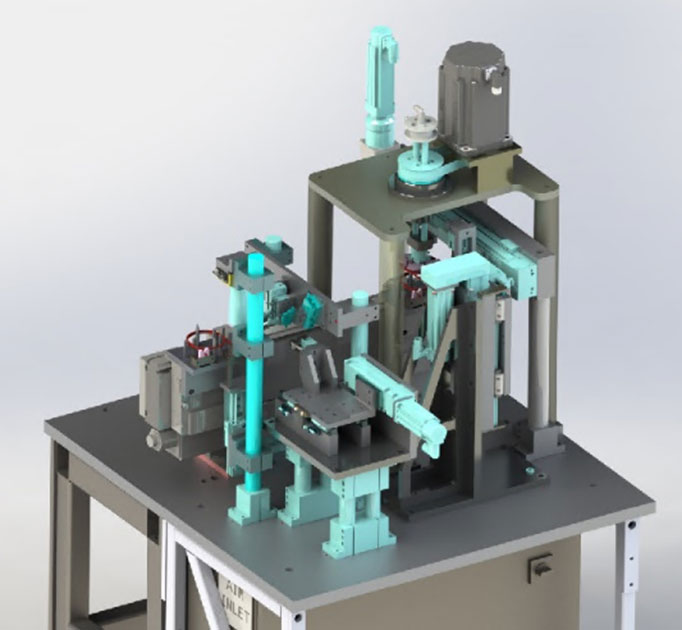
To be successful in tube set assembly, the equipment must also be flexible to the variability in incoming product. As any tube set supplier will tell you, getting a tube with perfectly consistent diameter, ovality (the delta between largest and smallest diameter around the circumference of a tube), or even stiffness is next to impossible. To accommodate for these changes in incoming product, it’s critical that the assembly equipment allows for ease of adjustability to make adjustments where needed, especially for the component insertion stations. This, again, is where the use of servos and pneumatics come in.
Using ATS’s synchronized device user interface, technicians are able to adjust a multitude of tooling/process parameters including servo profiles and pneumatic timing directly via the equipment’s Human Machine Interface (HMI) – no specialized PC programs required. For example, with servo profiles, the insertion profile to bond a connector to the tubing (left image below) or the pull profile of the tubing (right image below) may need to be modified to compensate for changes in nominal tubing properties over time. For pneumatics, the timing of cylinders or grippers can be adjusted to compensate for wear in the devices over time (e.g. a gripper that takes 150 ms to close after three years operation versus 100 ms at equipment acceptance test).
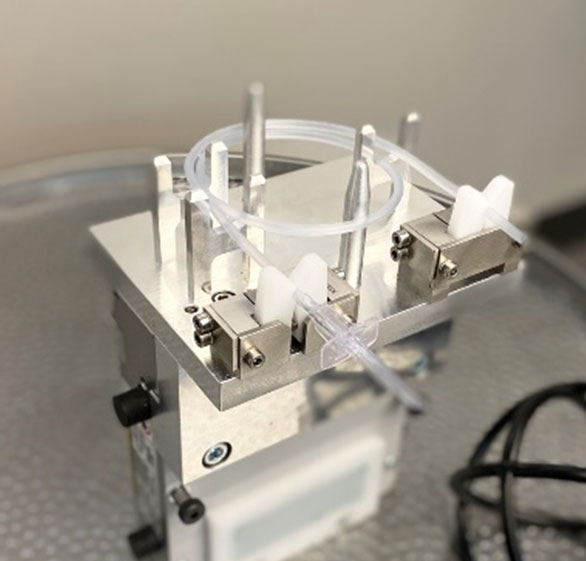
For security and traceability, these operations are all secured behind a technician (or admin, if desired) user login, and the equipment also keeps a log of all prior process parameters, ensuring that the machine can be brought back to its original, acceptance tested state, if required.
Flexibility Through User Interface Adjustable Tooling

ATS’s solutions for flexible tube set assembly can be customized to fit many form factors of tube sets, ranging from the simplest straight tail assembly all the way to a multi-segment, packaged set. Learn more Please contact an ATS representative about your product today!
No other solution comes close to matching both the speed and flexibility of ATS’s tube set assembly offerings. Combining the innovative technology of the SuperTrak CONVEYANCE, robust and industry-proven servo pneumatic station tooling, and intuitive interfaces that reduce the challenges of maintaining tube set assembly equipment long term, ATS LSS equipment will ensure that your demanding product volume outputs are met today, tomorrow, and far into the future.
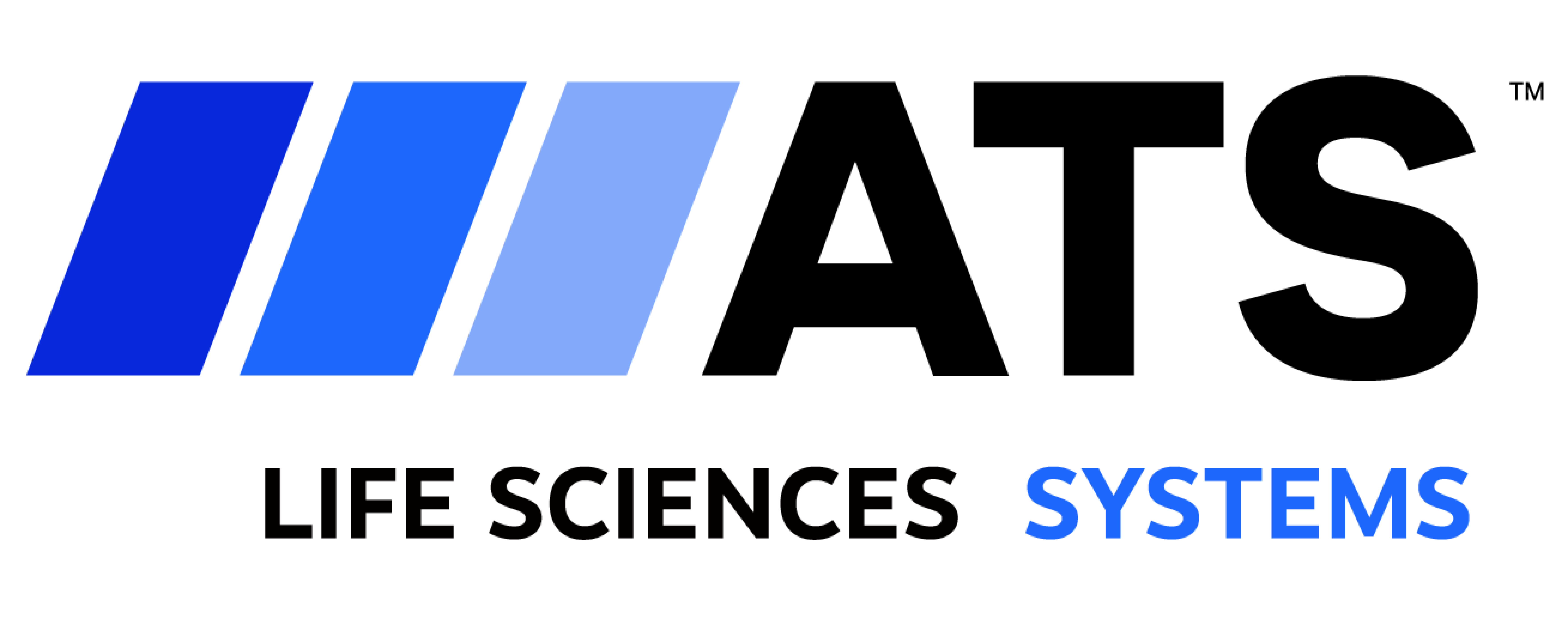

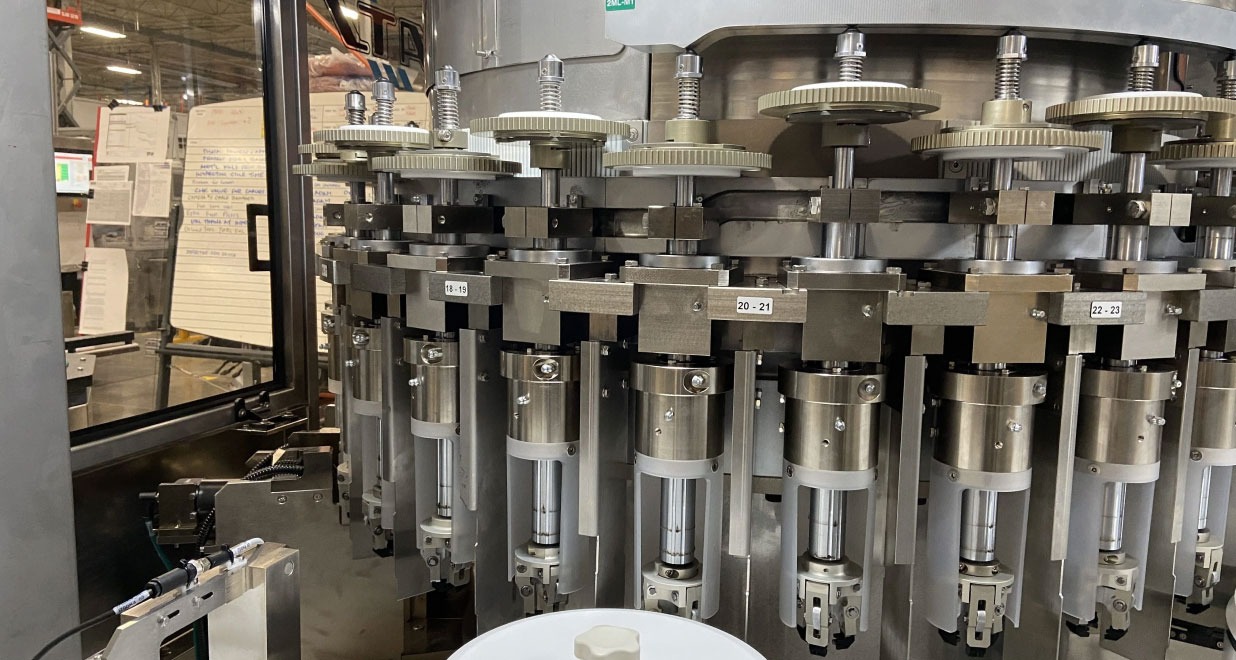
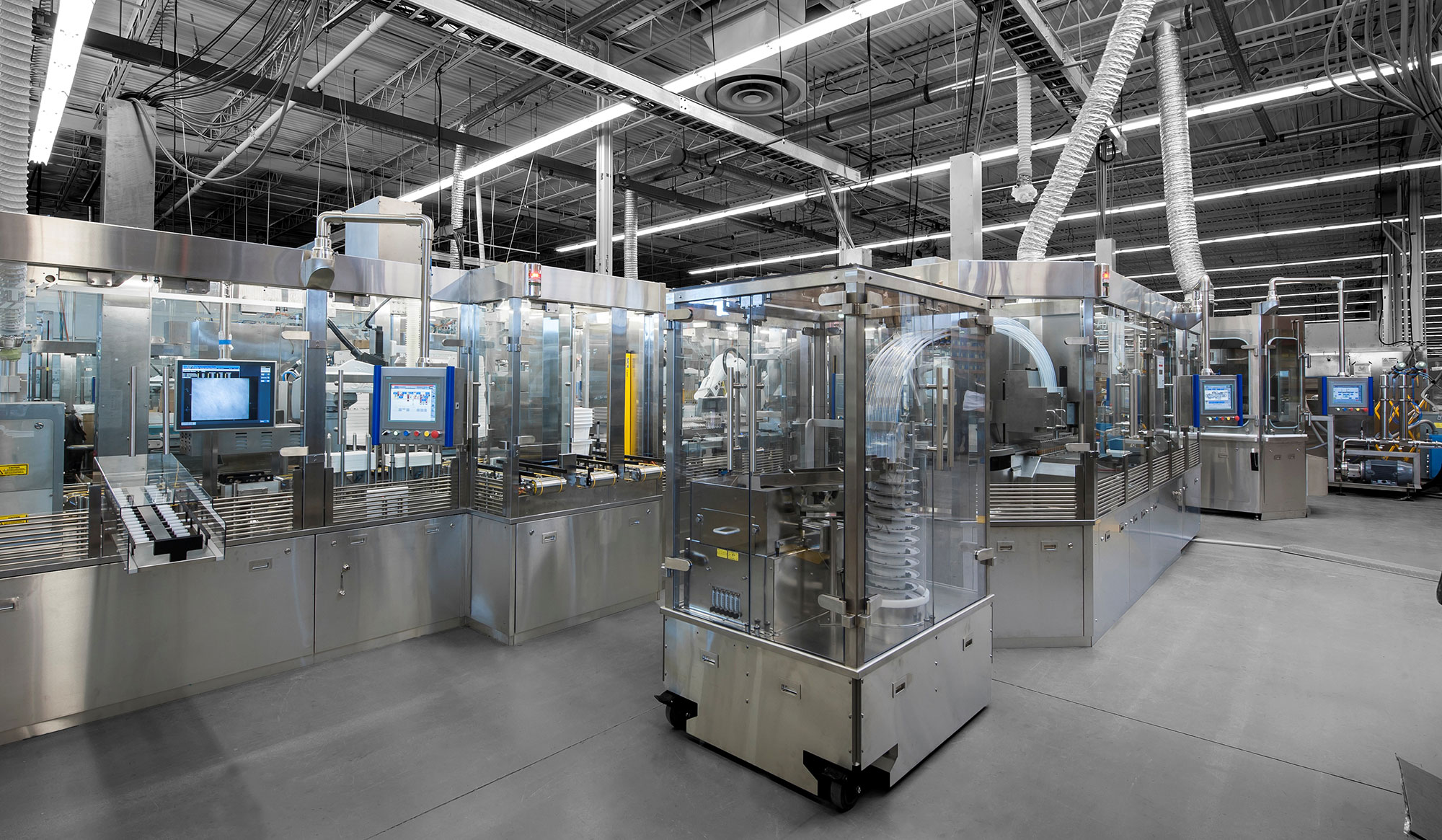



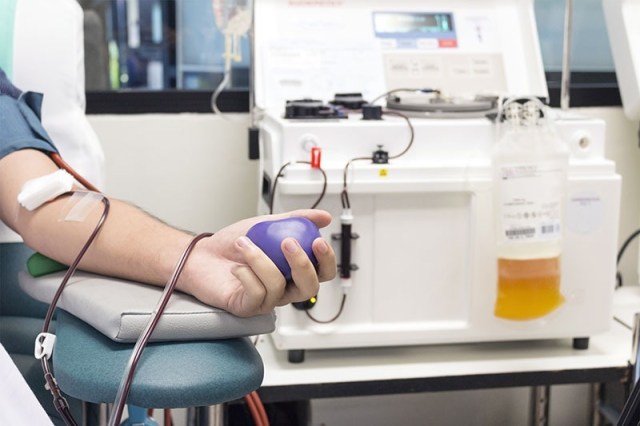

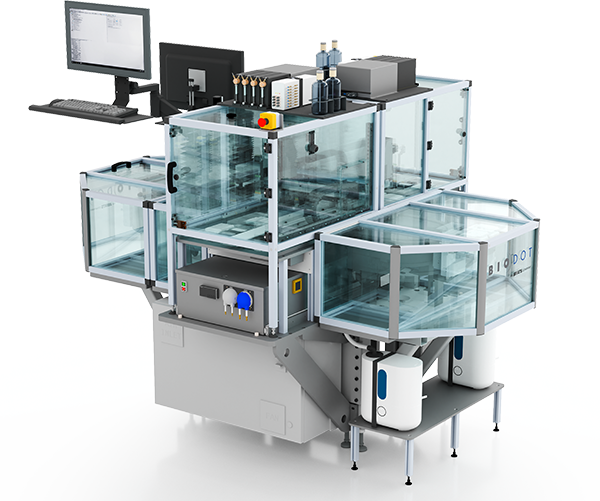



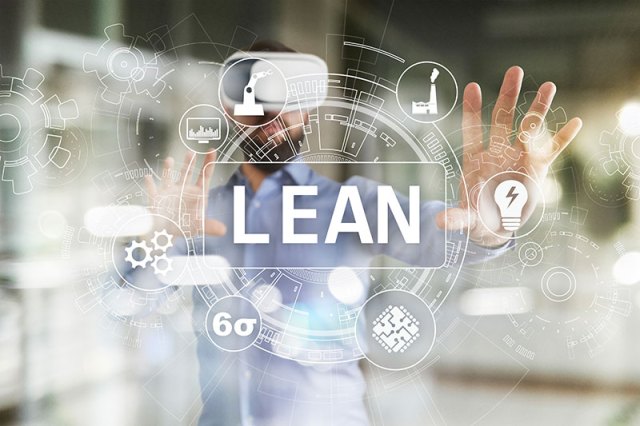

 Contact Us
Contact Us  Subscribe
Subscribe  LinkedIn
LinkedIn  Youtube
Youtube